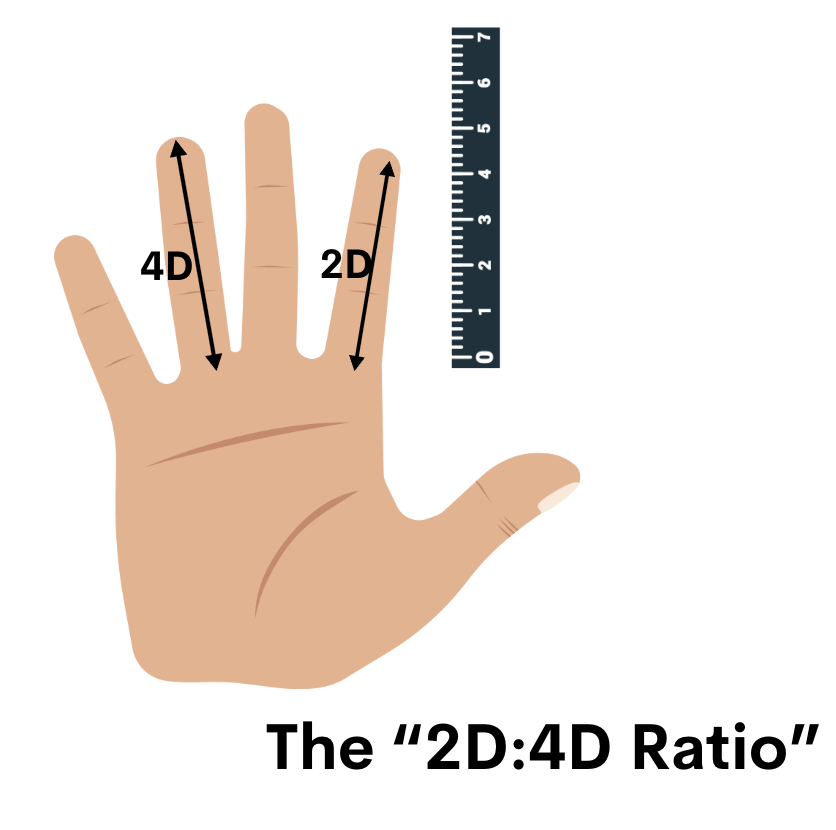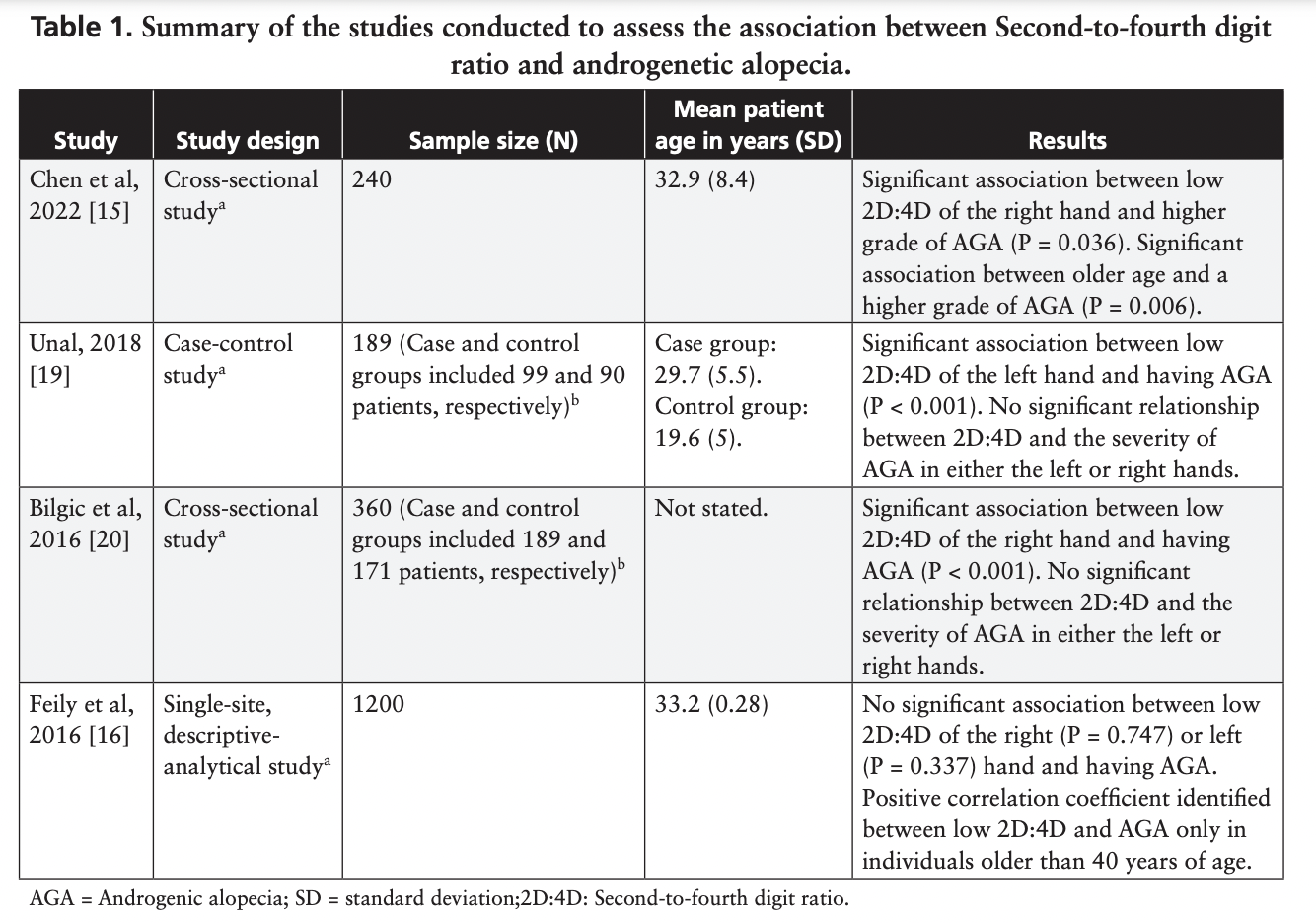The 2D:4D Ratio: Nice Article Summarizes a Challenging AGA Literature
The 2D:4D Ratio
The measurement of the length of the second and fourth fingers has been argued by some to provide a crude measurement of exposure to androgens in utero and an estimate of risk of androgen related disorders. Some have proposed that a lower 2D:4D ratio may signify elevated levels of perinatal testosterone, thereby providing a surrogate marker of an increased risk to develop androgenetic alopecia. The 2D:4D ratio has been utilized to predict the risk of hyperandrogenism, increased body mass index and waist-to-hip ratio, and benign prostatic hyperplasia.
How to measure the 2D:4D Ratio
To measure the 2D:4D ratio, the lengths of second digit (index finger) and fourth digit (ring fingers) are measured from the fingertip to the midpoint of the basal crease, on the ventral surface of the hand. They are best measured using digital vernier calipers for greater accuracy. More commonly a ruler is done when sophisticated calipers are lacking. The 2D:4D ratio is obtained by dividing these values. Usually, two or more measurements are taken to ensure the greatest reliability. The mean of the multiple measurements are taken for right and/or left hand and divided for the calculation of 2D:4D ratio of the right and left hands separately. Some have argued that the right digit ratio is more differentiated and sensitive to prenatal testosterone exposure. Many researchers report an “averaged” 2D:4D ratio across both hands
Does the 2D:4D ratio Predict Androgenetic Alopecia?
A nice review by Almashali M et al. summarizes what we know about the 2D to 4D ratio in AGA. The authors show us that 4 studies have been published that address this issue. Three studies suggest a role for the 2D:4D ratio to predict AGA and one large study suggests there’s really not much evidence at all (except maybe in individuals over 40 years of age).
A study by Chen et al from 2022 showed that individuals with a right-hand 2D:4D less than 0.947 may have a more severe form of AGA (P = 0.036). The authors found that the marker really becomes even more reliable as one ages. In other words, older individuals with a low 2D:4D were more likely to have androgenetic alopecia.
The largest study on the subject was a 2016 study from Iran by Feily A and colleagues. The authors studied 1200 males with AGA and found no link between AGA and 2D:4D ratio. However, the authors did find that when data was stratified according to age, there was a positive correlation between a low 2D:4D and the risk of AGA in those older than 40 years of age. Taken together, the authors proposed that the the 2D:4D may not be used to determine a patient’s likelihood of developing AGA without also considering the patient’s age. it’s much more useful of a test in older adult males.
Table from
REFERENCE
Almashali M et al. The Use of 2D:4D Digit Ratio as a Predictor of Androgenetic Alopecia: A Review. Dermatol Pract Concept. 2023 Oct 1;13(4):e2023237.
Key Studies Referenced
Chen WC, Hsu WL, Chen JY, Shih NH, Wu CY. Second-to-fourth digit ratio and age predicting the severity of androgenetic alopecia: a cross-sectional study. Aging Male. 2022;25(1):242–248.
Feily A, Hosseinpoor M, Bakhti A, et al. Digit-Length Ratios (2D:4D) as a Phenotypic Indicator of in Utero Androgen Exposure is Not Prognostic for Androgenic Alopecia: a Descriptive-Analytic Study of 1200 Iranian Men. Dermatol Reports. 2016;8(1):6386.
Unal M. Digit ratio 2D:4D is a possible indicator for androgenetic alopecia in males. J Cosmet Dermatol. 2018;17(3):545–548.
Bilgic Ö, Altınyazar HC, Eryılmaz D, Tuğrul ZA. Are 2D:4D finger-length ratios an indicator of androgenetic alopecia in males? An Bras Dermatol. 2016;91(2):156–159.
This article was written by Dr. Jeff Donovan, a Canadian and US board certified dermatologist specializing exclusively in hair loss.


